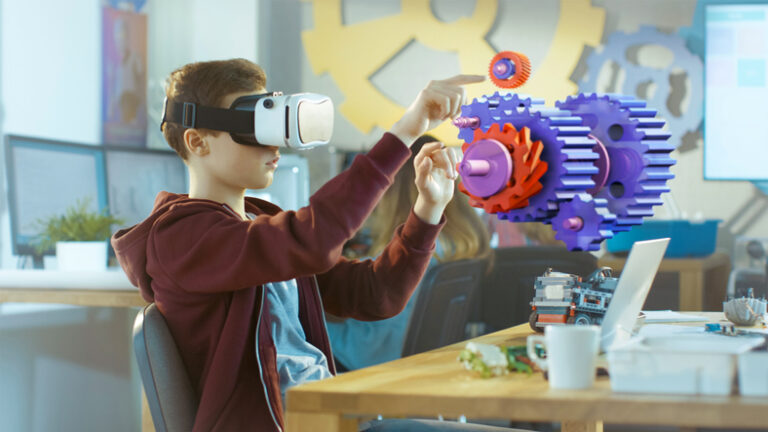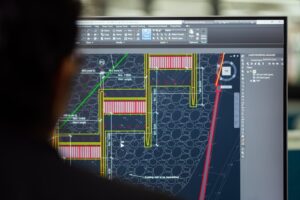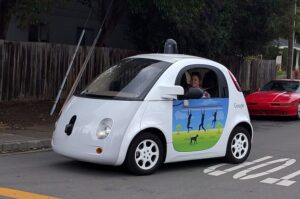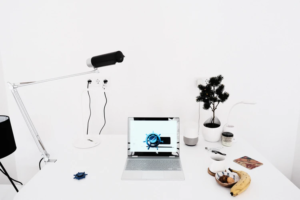People working in the manufacturing industry face many challenges. However, augmented reality (AR) can help solve them. It’s a technology that blends real-life and virtual elements, often providing supplemental information to what’s happening in an environment. Here are some manufacturing obstacles and how AR can help you overcome them.
1. Decreased Productivity
Keeping productivity levels high is essential for today’s manufacturers. Otherwise, you could fail to meet tight production deadlines, resulting in upset customers. However, AR can target many aspects that cause reduced productivity, helping workers perform at their best.
In one case, factory workers dealt with a complex wire harness assembly with nearly 300 connections. Before the facility started using AR, the workers’ process involved moving back and forth between an assembly station and a computer monitor that showed complicated instructions for employees to follow. This caused an inefficient workflow that often made people assume ergonomically unfriendly positions that could lead to strain.
Company leaders worked with a service provider to develop an AR solution that let workers see the instructions directly inside their glasses. This hands-free option allowed employees to view real-time instructions for each point in the assembly process.
An analysis of the results showed greater efficiency for experienced workers and a shortened time-to-proficiency metric for new hires. Additionally, the ergonomics associated with the process improved because people no longer had to move between the computer screens showing the instructions.
Workers with immediately accessible details about their tasks are more likely to do their jobs quickly and with fewer errors. The results of using AR can positively impact quality control metrics and help employees feel more confident in their work.
“Some AR solutions let employees see instructions directly inside their glasses, giving them hands-free resources”
2. A Persistent Labor Shortage
It’s often hard to get the workforce numbers needed for adequately staffed facilities. The industry has high turnover rates due to the strenuous work, the long hours and the fact that many employees are leaving the workforce after reaching retirement age. Some people also perceive manufacturing as an unattractive sector to enter. Many job candidates can find options providing more flexibility and a better work-life balance for similar pay.
One 2022 study from The Workforce Institute at UKG revealed that nine in 10 manufacturers have difficulty filling open roles. Another takeaway was that the leaders surveyed estimated they had appropriate staffing numbers for only 11 days out of every year.
However, AR can address these issues by making training faster and more effective. In one case, an augmented reality training solution allowed people to aim a tablet at a car’s dashboard and see underneath it without removing any physical components.
Augmented reality can also position your company as being on the cutting edge of technology. Job shadowing is a common practice used by people who want a glimpse of working in a particular industry or role. They follow a current employee around for at least a day to understand what it’s like to work at a company. That option can help them decide if a career is a good fit for them.
Imagine if someone visits a manufacturing plant and sees employees using AR glasses. They could then realize that the sector is more desirable than they previously thought.
“AR can make worker training faster and more effective.”
3. Long Time Frames Associated With Equipment Downtime
The unexpected outage of critical manufacturing equipment can be devastating for your workflow. Depending on the nature of the problem, it may not be possible to fix it right away. That’s because it takes time to schedule a technician to come to the plant, order new parts, and have them installed. However, AR can accelerate this process and even remove a formerly essential step.
Some companies have augmented reality platforms that allow clients to show remote technicians what they see when examining a machine. They can see what’s happening and advise clients on how to handle it. They might walk them through certain troubleshooting steps or take other specific actions that may make site visits unnecessary.
Such solutions can also help well-known brands maintain the top-class service customers expect from authorized service providers. During the COVID-19 pandemic, automaker Porsche used augmented reality to connect service technicians in the field with people at the company’s headquarters. This approach shortened the problem resolution time by up to 40%.
It also improved communications between field technicians and support team members at Porsche’s headquarters. Instead of making lengthy phone calls to describe or address issues, technicians could send screenshots. They’d receive technician bulletins or other instructions directly on the surface of their AR glasses.
“AR can accelerate the equipment repair process by eliminating some site visits.”
AR for Manufacturing Is Worth Consideration
The outcomes described here represent compelling reasons you should consider whether augmented reality could help your plant overcome obstacles. Deploying it takes time and effort, but devoting adequate resources to using that technology in a factory could result in long-term gains that help manufacturing brands stay competitive.
It’s also important to ask employees about their experiences of working on the factory floor. You don’t always have accurate perspectives of what that’s like if you spend much of your time working behind the scenes or sitting at a desk. However, getting feedback from workers is an excellent way to learn about their specific difficulties and how AR could help solve them.
You should set aside ample time for people to learn to use any AR solution. Changes to workflows can often be unsettling, but employees usually find adjusting is more manageable with thorough and well-paced training.










